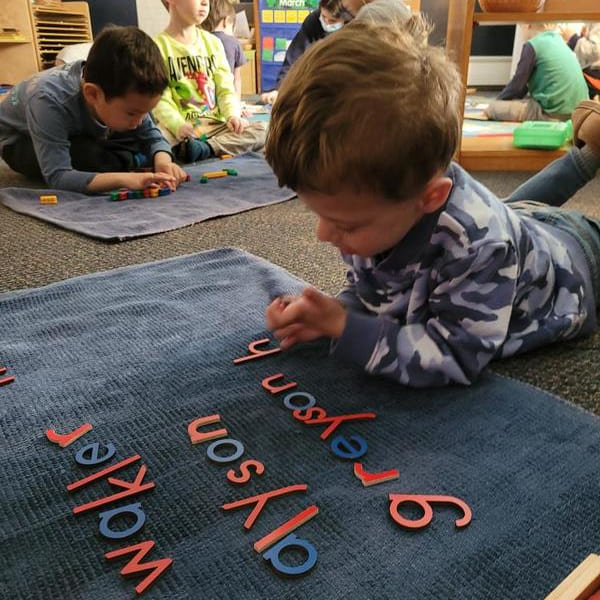Benefits of
Montessori
The Montessori Difference
Guess what the founders of Google, Amazon, Wikipedia, and the creator of SimCity, have in common with Julia Child, Ann Frank & ‘Puff Daddy’?Would the fact that they all attended Montessori schools surprise you?
Some Differences Between Montessori And Traditional Kindergartens
Since parents of our students may often be Montessori alumni themselves, sometimes it’s easy to overlook how many others might not be familiar with the advantages that a Montessori education affords their child, particularly when the differences are contrasted with that of a traditional daycare center, or public school kindergarten.
Does your child love school and can’t wait to go every day? If so, consider yourself fortunate. Why tinker with a winning school situation, when so many families are frustrated and disappointed? The goal of both Montessori and traditional kindergartens is the same: to provide learning experiences for the child. The biggest differences lie in the kind of learning experiences each school provides, and the methods they use to accomplish this goal.
Montessori educators believe these differences are important, because they help to shape what a child learns, their work habits, and future interactions between themselves and the world around them. Montessori children in their third (or Kindergarten year) have a keen sense of order and coordination, can sit still longer, and are better organized in the class environment.


| MONTESSORI | TRADITIONAL |
| Emphasis on cognitive and social development | Emphasis on social development |
| Teacher-pupil ratio about 1 to 10 | Teacher-pupil ratio about 1 to 25 |
| Teacher has unobtrusive role in class | Teacher is center of classroom as “controller” |
| Environment and method encourage self-discipline, with assistance from teacher | Teacher acts as primary enforcer of discipline |
| Group and individual instruction | Mainly group instruction |
| Mixed age grouping | Same age grouping |
| Grouping encourages children to teach and help other | Most teaching done by the teacher |
| Child chooses own work, with input from teacher | Curriculum structured for large groups |
| Child discovers own concepts from self-teaching Materials | Concepts are formally presented |
| Child can leave out work to finish the next day | Child generally allotted specific time for work, and must put it away at the end of the day |
| Child sets her own learning pace, teacher assists | Instructional pace usually set by group norm |
| Child reinforces own learning by repetition of work and internal feelings of success | Learning is reinforced externally by repetition, rewards and punishment |
| Multi-sensory materials for physical exploration | Few materials for sensory development |
| Organized program for learning the care of self and environment (polishing shoes, cleaning tables, etc.) | No organized program for self-care; left primarily up to parents |
| Child can work where she chooses, move around and talk at will (yet will not disturb the work of others); group work is encouraged | Child usually assigned own chair, required to participate, sit still and listen |
| Montessori children can usually read by 4-1/2 if they have been in Montessori for two years prior | Public school children start with only letter sounds in kindergarten |
